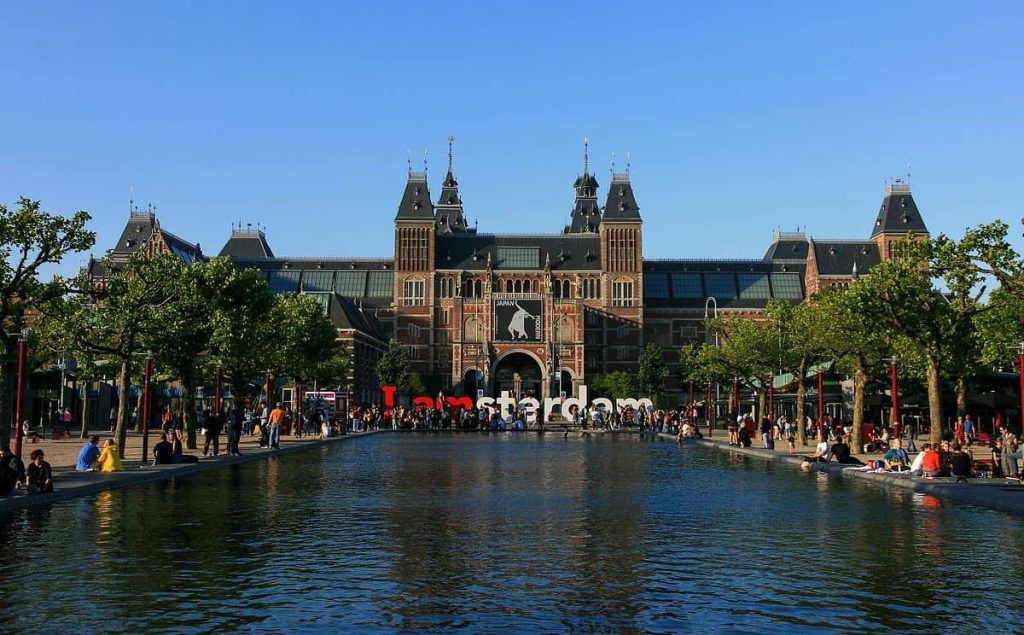Many of the paintings of Rembrandt, one of the greatest Dutch artists in history, feature a clear subject matter.
One of the paintings that Rembrandt van Rijn (1606-1669) produced during the final years of his life might not exactly depict what the title of the work describes.
In this article, we’ll take a closer look at some of the most interesting facts about The Jewish Bride, a mysterious by the Baroque master.
1. The painting was completed shortly before the artist passed away
Rembrandt Harmenszoon van Rijn was born in Leiden, a city in the Dutch Republic (now the Netherlands) between The Hague and Amsterdam. The period in which he was born was the most successful era of the Dutch Republic known as the “Dutch Golden Age.”
His father was relatively well-off and they enrolled the young Rembrandt into the local university. When it became clear that his talent for drawing and painting was immense, he started an apprenticeship with a local artist as a teenager.
After a successful period in Leiden, he moved to Amsterdam, by then a city that was growing in importance as the economic heart of the Dutch Republic.
Despite being extremely successful during his lifetime, he lived the final years of his life in squalor due to mishandling his money.
He completed The Jewish Bride during the final years of his life, anywhere between 1665 and 1669.
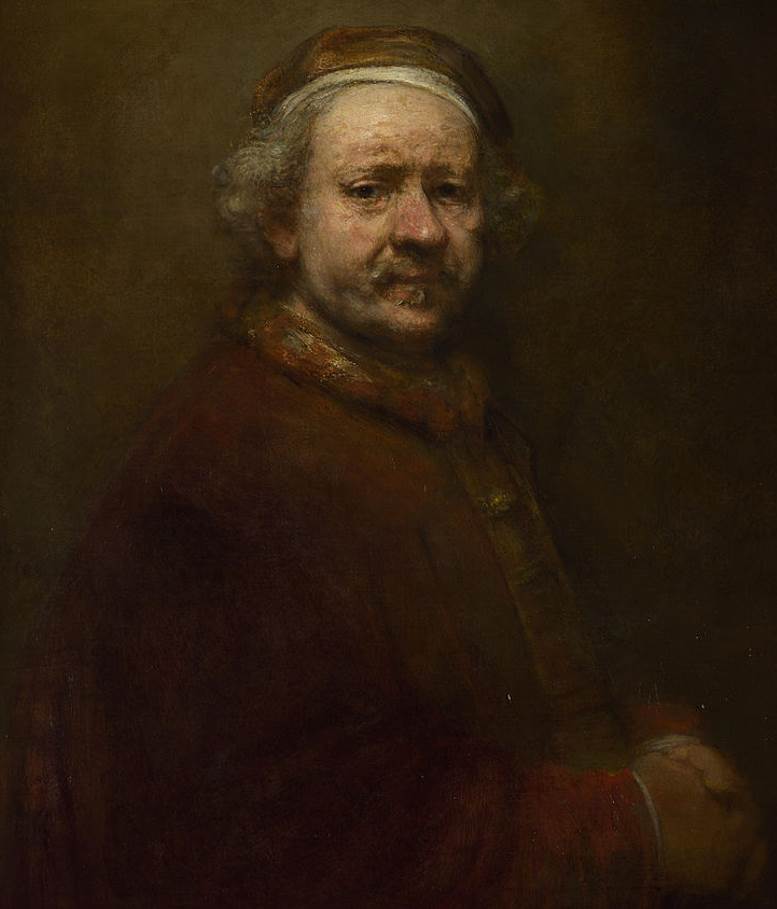
2. The painting got its current name in the early 19th century
This magnificent Rembrandt painting was shrouded by a cloud of mystery until a 19th-century art collector uncovered the true meaning of the work.
He suggested that the painting depicts a Jewish father offering a necklace to her soon-to-be-married daughter. If this interpretation is correct, it’s possible it was commissioned as a wedding gift.
Art historians don’t agree with this interpretation anymore for several reasons. The man seems to be too young to be the father of the woman and it’s fairly certain that this is actually a couple in love.
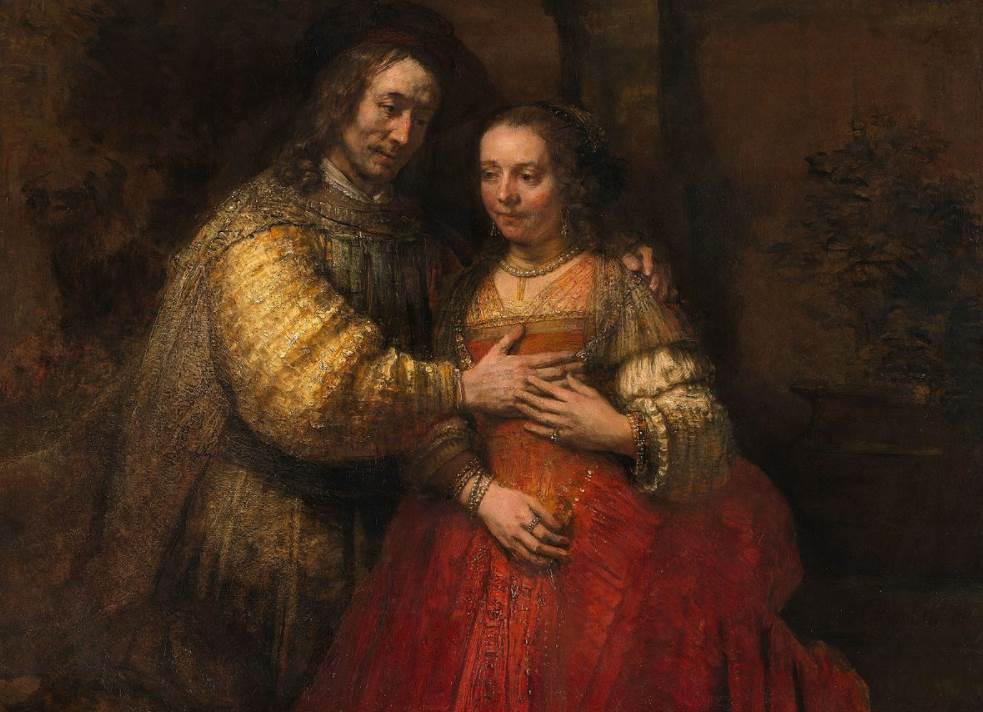
3. It’s not the only painting by the artist with this title
The Dutch title of the Jewish Bride is “Het Joodse Bruidje.” This title is also used to define another painting by Rembrandt which he completed in the year 1641.
This painting, completed approximately a quarter-century before the painting described in this article is also known as “The Girl in a Picture Frame” or “The Girl in a Hat.”
Rembrandt often depicted people of the Jewish Community in Amsterdam, especially because he lived among them. He was not Jewish himself but had a great influence on Jewish artists.
Just like the mysterious painting of the man and woman, the identity of the sitter in this work remains unknown.
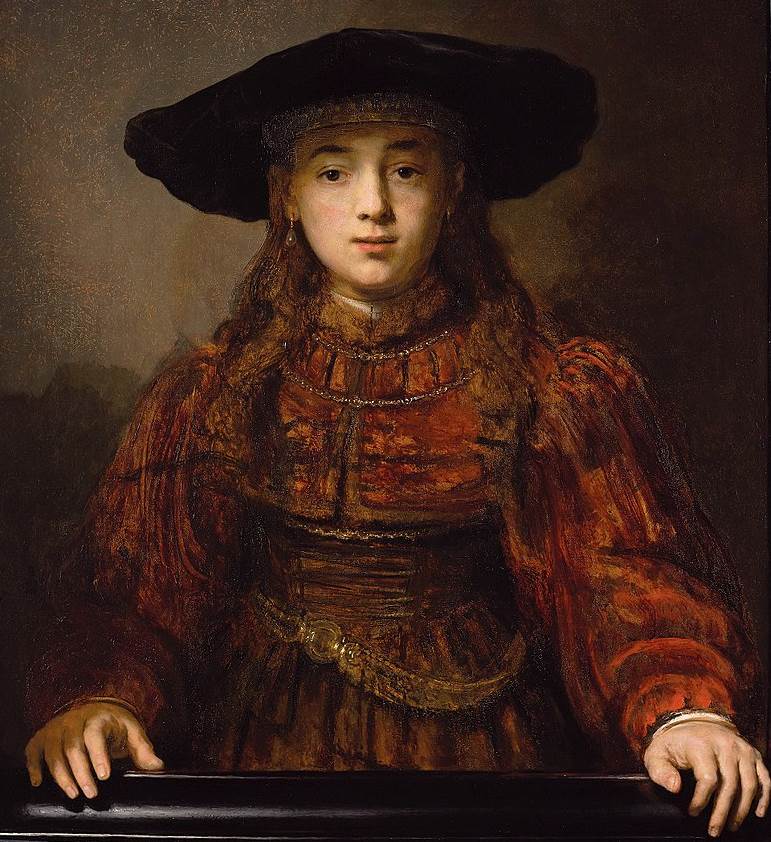
4. Two people close to Rembrandt have been suggested as the sitters
So who are the depicted man and woman in the Jewish Bride?
There aren’t any clues that might hint at their identity so art historians have only been able to guess who they were.
One of the suggestions made was the artist’s son Titus van Rijn (1641-1668), a young man and the only son of Rembrandt and his wife Saskia van Uylenburgh (1612-1642).
Titus often figured as the model in his father’s paintings and got married to Magdalena van Loo (1641-1669) in the year 1668. This was around the time that the painting was completed.
Titus wasn’t Jewish either and doesn’t really resemble the depicted man so this suggestion might be far-fetched.

5. Rembrandt once made a drawing that might reveal the couple’s identity
During the final decade of Rembrandt’s life, he often depicted couples who were in love, similar to the man and woman depicted in the Jewish Bride.
They often featured as Biblical figures and this might hint at the meaning of the painting. This notion is strengthened by the fact that he once made a drawing depicting a Biblical couple.
In 1662, he produced a drawing titled Isaac and Rebekah, two important figures in the Old Testament. According to the Hebrew Bible, Isaac was considered to be of the three patriarchs of the Israelites.
While this theory doesn’t reveal the real identity of the couple, it does provide insight as to why they are wearing expansive Jewish clothes.
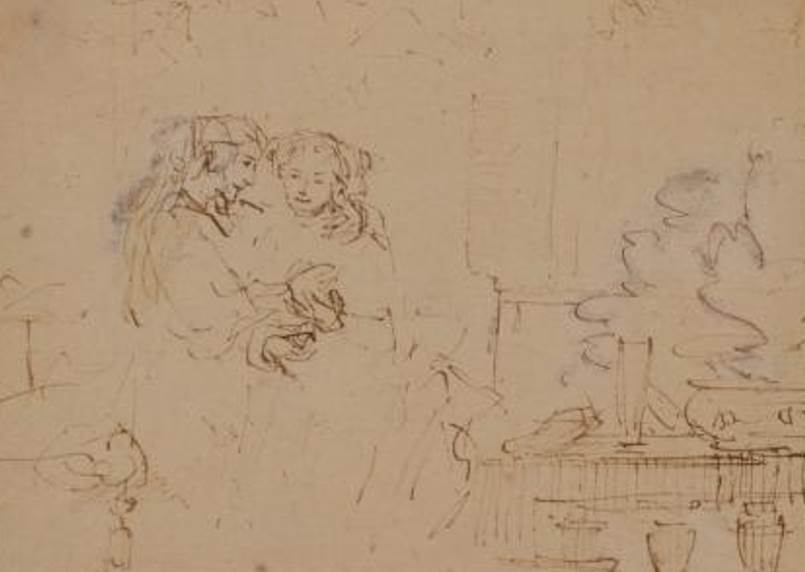
6. It’s a testimony to the incredible talent that Rembrandt possessed
Vincent van Gogh (1853-1890), the famous Post-Impressionist painter of the 19th century, was one of the great admirers of Rembrandt.
He visited the Rijksmuseum in Amsterdam in October 1885 and came across Rembrandt’s masterpiece in the newly opened national museum of the Netherlands.
Van Gogh once wrote about the painting to his brother:
One must have died many times to paint like this. Rembrandt goes so deep into the mysterious that he says things for which there are no words in any language.
The troubled Dutch artist wasn’t the only one who admired the oeuvre of Rembrandt. French artist Auguste Rodin (1840-1917) once mentioned:
Compare me with Rembrandt! What sacrilege! With Rembrandt, the colossus of Art! We should prostrate ourselves before Rembrandt and never compare anyone with him!
The delicate touch of the man and the incredible level of detail are elements in this painting that moved van Gogh to tears. It’s not hard to understand why as well.
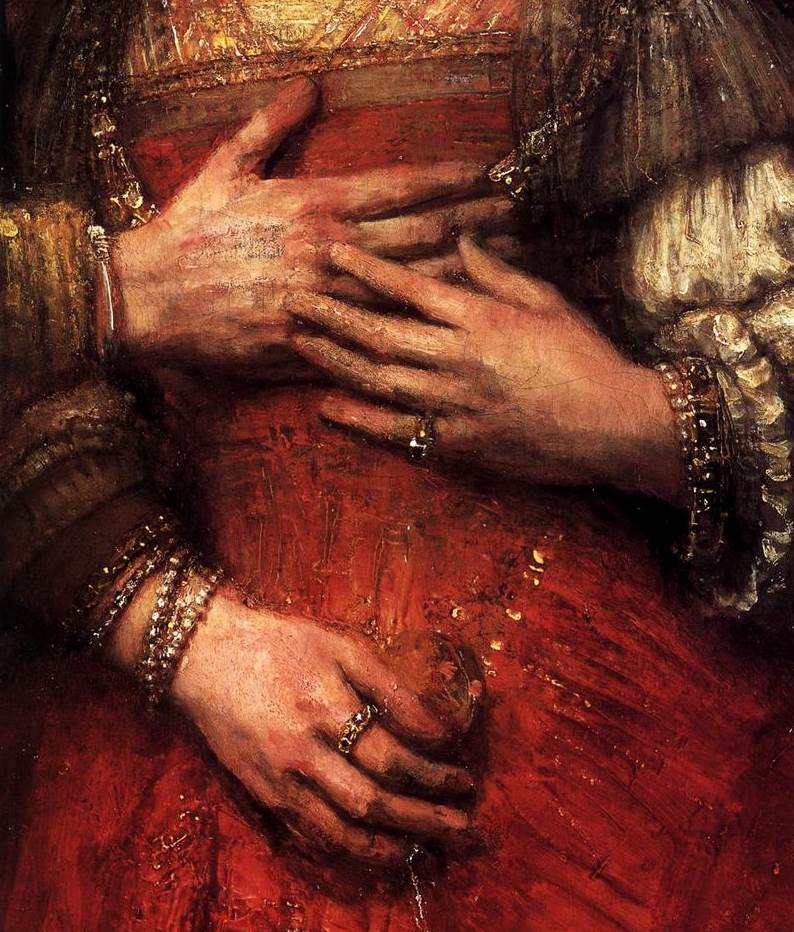
7. How big is The Jewish Bride by Rembrandt?
The Dutch master was an incredibly versatile artist who managed to produce small drawings and etchings as well as monumental paintings.
The Jewish Bride by Rembrandt isn’t the biggest work in his oeuvre but it’s far from being the smallest as well. The oil on canvas painting has dimensions of 121.5 × 166.5 centimeters (47.8 × 65.6 inches).
8. Where is the painting located today?
Vincent van Gogh was able to admire the painting in Amsterdam, and the painting is still part of the collection of the Rijksmuseum today.
Little did he know that this part of Amsterdam South would become the Museum district that would also feature a museum in his honor, the van Gigh Museum.
The national museum of the Netherlands also houses Rembrandt’s ultimate masterpiece titled “The Night Watch” (1642) along with numerous other famous paintings by European masters.
